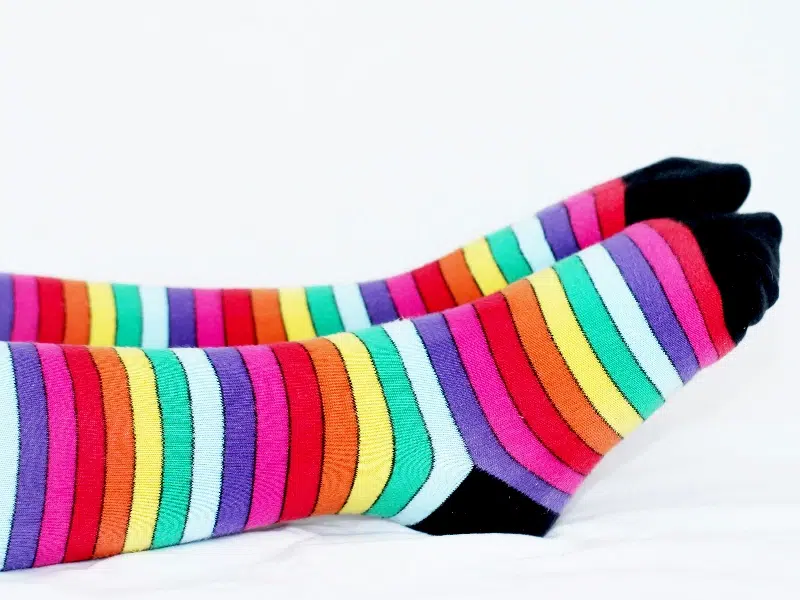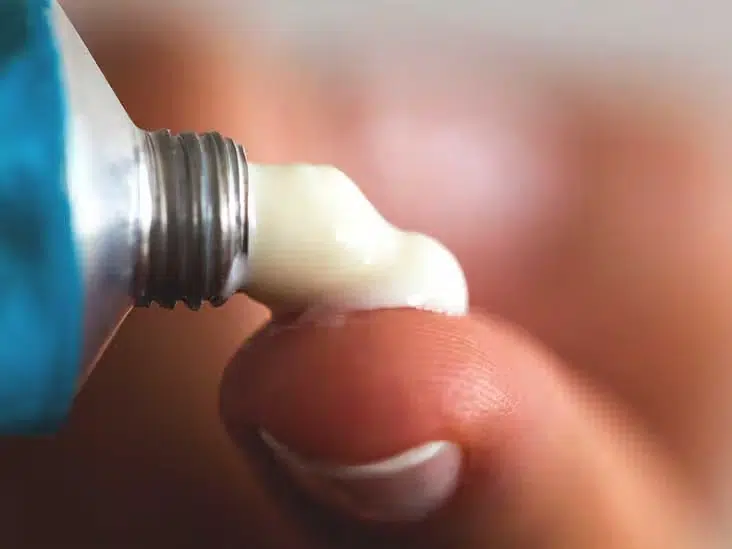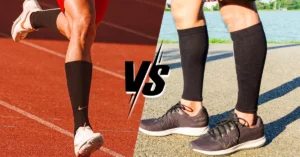It is vital to note that compression socks for neuropathy can greatly benefit those affected by this condition. They help relieve pain by enhancing blood flow and preventing symptoms like tingling and numbness. Additionally, these socks can improve overall foot health, making them ideal for people with diabetes and similar conditions.
Wearing the right compression socks can greatly enhance comfort and flexibility. They assist in strengthening the muscles to stabilize and balance the body, making most tasks easier and safer to perform. Many options are available today, allowing one to choose pressure levels and materials that are most comfortable and appropriate for wear.
It is important to educate yourself about the advantages of compression socks and how to select the best ones to manage your neuropathy symptoms effectively. For more detailed information, consider visiting this guide on choosing compression socks for your specific use.
Understanding Neuropathy and Its Causes
Neuropathy is a condition in which the nerves are injured. It can manifest with symptoms like pain, numbness, and tingling. These symptoms mainly affect the peripheral nerves that connect the brain and spinal cord to the limbs and other body parts.
Peripheral Neuropathy and Diabetes
Diabetic peripheral neuropathy is one of the common manifestations of diabetes mellitus. This condition results from nerve damage caused by high blood sugar levels, typically starting in the feet and legs.

Source: https://www.advocatehealth.com/health-services/brain-spine-institute/brain-care-center/conditions-treatments/diabetic-neuropathy
The pain and discomfort resulting from diabetic neuropathy can be severe. Symptoms may include sharp pains, a burning sensation, or sensitivity to touch. Diabetic neuropathy can be prevented or delayed in patients with diabetes by controlling their blood glucose levels.
Blood circulation and nerve health are interconnected. Blood circulation issues can exacerbate nerve damage and the manifestation of neuropathy.
The Impact of Nerve Damage
Nerve damage impairs the usual functioning of the brain, spinal cord, and the rest of the body. This may lead to disorders of sensation and movement or motor function and sensation disorders.
There are several causes of nerve damage, such as injury, infection, and diseases like diabetes. Damaged peripheral nerves can send the wrong signals to the brain, leading to pain, tingling, or numbness.
Other complications include losing sensitivity, which can prevent patients from feeling pain from cuts or blisters. Therefore, it is important for patients to pay close attention to their feet and legs for any signs of injury.

Source: https://www.everydayhealth.com/neuropathy/guide/
Risk Factors and Underlying Causes
Several factors may predispose a person to develop neuropathy. These factors include diabetes, alcoholism, and exposure to toxins in the environment. Genetics can also play a role, making some people more prone to neuropathy.
Other predisposing factors to neuropathy include autoimmune diseases, HIV, and vitamin deficiencies. Peripheral nerves can also be affected by blood flow conditions, including atherosclerosis.
Some drugs, including those used in cancer treatment through chemotherapy, can also cause nerve damage. All of these factors should be detected and addressed in order to minimize the effects of neuropathy on everyday functioning.
Benefits of Compression Therapy for Neuropathy
Compression therapy offers numerous benefits, particularly for patients with neuropathy, by enhancing blood flow and reducing inflammation and pain.
Increasing Blood Circulation
Compression therapy enhances blood flow in the lower limbs. The pressure exerted by compression socks on the calf muscles facilitates blood return to the heart. This is particularly beneficial for neuropathy patients, who experience circulation problems.

Source: https://www.mastertonfootclinic.co.nz/foot-facts/compression-socks/
The therapy is graduated, with the highest pressure at the ankle and decreasing towards the thigh. It reduces the risk of blood pooling in the lower limbs and helps prevent conditions such as deep vein thrombosis.
In addition, compression therapy improves blood circulation and accelerates the healing of ulcers and other neuropathy-related wounds.
Reducing Swelling and Pain
One of the primary benefits of compression therapy is its ability to alleviate inflammation and pain. Swelling in the legs and feet due to neuropathy is common, causing discomfort and increasing the risk of complications.
Compression socks apply continuous pressure to affected areas, effectively reducing swelling and improving blood flow and oxygen supply to tissues. This is crucial for providing pain relief to neuropathy patients, allowing them to lead normal lives with reduced discomfort.
Choosing the Right Compression Socks
Therefore, it’s crucial to select compression socks that effectively manage neuropathy. Key considerations include compression levels, materials, moisture-wicking properties, and ensuring proper fit.

Compression Levels and Types
Understanding the different compression levels is essential. Compression socks are classified into three categories: mild, moderate, and firm. Mild compression socks usually range from 8-15 mmHg. These are suitable for daily use and are often recommended for people with diabetes or mild symptoms of circulatory issues. Moderate compression socks offer compression levels between 15-20 mmHg. These are suitable for everyday wear and are effective in managing mild to moderate symptoms of conditions like neuropathy and venous insufficiency.
Firm compression socks range from 20-30 mmHg. They provide stronger compression and are recommended for individuals with moderate to severe symptoms of neuropathy or other circulatory disorders. Compression socks exceeding 30 mmHg are generally prescribed for severe conditions and should be used under medical guidance.

Compression types vary as well. Graduated compression socks apply the highest pressure at the ankle and gradually decrease up the leg to enhance blood circulation. In contrast, uniform compression socks apply even pressure across the foot. Each type serves its own purpose and preference.
Material and Moisture Wicking Features
The material is one of the most important aspects that determine efficiency and comfort when wearing compression socks. Search for those made from comfortable and long-lasting fabrics, such as nylon and spandex. These materials allow the socks to maintain their conformity and pressure gradient over time.
Breathable fabrics ensure feet stay dry, reducing discomfort that can lead to sores, especially for diabetic neuropathy patients. A non-binding top prevents the socks from cutting into the skin, ensuring comfortable wear throughout the day.
Finding the Correct Size and Fit
The right fit allows the wearer to derive maximum benefits from compression socks. A sizing chart can help you get the right size. Take measurements of your ankle, calf, and sometimes even your thigh, depending on the height of the sock.
Compression socks that are tight will be uncomfortable, while those that are loose will not provide the needed pressure. Look for size options; some companies provide socks with extensibility to cover different shoe sizes. It is always wise to check on the reviews and size charts to ensure you are making the right purchase.

Source: https://www.allstarmedicalllc.com/blog/how-to-measure-for-knee-high-compression-stockings
Managing Neuropathy Symptoms
Treating neuropathy involves pain control, dietary changes, and complementary therapy. These approaches can be useful for relieving discomfort and enhancing the patient’s quality of life.
Neuropathy Pain and Pain Relief Strategies
Some neuropathy pain can be excruciating and difficult to manage. They include the use of drugs as well as treatments. Non-prescription medications such as Ibuprofen and Acetaminophen can be administered to help minimize inflammation and pain. Anticonvulsants and antidepressants might also be used for neuropathy pain as part of prescription medications.
Prescription topical preparations such as creams and gels, including capsaicin, are effective in alleviating nerve pain when applied to the skin’s surface. They can also help in relieving the condition by enhancing circulation within the feet and minimizing the associated signs.

Source: https://www.healthline.com/health/capsaicin-cream
In worse cases, treatments like Scrambler therapy can help reprogram the brain and block pain signals. This involves sending electrical signals to the brain to counter pain signals that are being relayed.
Lifestyle Adjustments for Neuropathy Patients
It is essential to keep neuropathy symptoms under control and avoid progression through lifestyle modifications.
Exercise: Exercise enhances blood flow, which is essential for foot neuropathy. Low-impact activities such as walking or swimming are acceptable as they do not place a lot of pressure on the feet. Do not engage in activities that exert a lot of pressure on the feet and ankles.
Diet: Proper diet maintenance is basic. Foods high in vitamins, minerals, and antioxidants support nerve health. It is recommended to include more products containing fresh fruits and vegetables, lean proteins, and whole grains in one’s diet. Restricting the intake of foods high in sugar content and monitoring blood glucose levels is crucial, especially for diabetics. Research has also indicated that it is possible to reduce some of the symptoms of neuropathies through general health improvement that focuses on dieting and exercising.

Photo by Unsplash
Foot Care: Maintaining the cleanliness of the feet, applying moisturizers, and checking for wounds can help avoid complications such as diabetic foot ulcers. The use of protective footwear and gel pads can protect the feet and provide a cushion-like effect.
Compression Socks: Incorporating compression socks into your daily life can also significantly improve circulation and reduce swelling, aiding in overall foot health. However, ensure they are suitable for your specific condition.
Avoidance: Staying away from alcohol and stopping smoking also helps in preventing new neuropathy or making the existing one worse. Alcohol and tobacco affect the nerves and circulation in the body in adverse ways.
Alternative Treatment Options
There are several forms of complementary therapies that can help alleviate neuropathy symptoms. For instance, light therapy entails the application of infrared light so as to enhance blood flow and alleviate pain. This non-invasive method can be easily performed at home if you have the right equipment.
It may also provide relief through nerve stimulation or by increasing the blood flow within the affected area. This is a form of traditional Chinese medicinal practice in which thin needles are inserted into various points of the body.
Some natural treatments include taking evening primrose oil for pain and inflammation relief. It is advisable to work with a healthcare provider to ensure any new treatment is safe and effective for the ailment you have.
Supplementary Care and Prevention Tips
In order to properly deal with peripheral neuropathy and avoid any further complications, the following practices should be observed: Some of them are skin health, dry feet, and the kind of exercise and diet to be taken. Additionally, regular check-ups and consultations with a physician are essential.
Regular Monitoring and Doctor Consultations
It is important that neuropathy patients schedule their doctor’s appointments as frequently as is necessary for their condition.

They must consistently track signs and symptoms, reporting any alteration in nerve pain, inflammation, and paresthesia. Some of the complications include varicose veins or fluid retention; knowing if they are present helps prevent future problems. If using compression socks, ensure they are suitable for your specific condition.
It can also be checked through a regular visit to the doctor and then receive a professional opinion from them. The doctors can give advice that would not be as broad, adapt treatment, and tell about any changes to the lifestyle. One should also describe any new symptoms or problems that he or she is experiencing since early detection plays a role in the treatment of cardiovascular autonomic neuropathy as well.
Conclusion
Compression socks are recommended for managing neuropathy. Consistent use of these socks increases blood circulation, providing relief from symptoms like numbness, tingling, and pain.
For patients suffering from peripheral neuropathy, compression socks can be particularly beneficial. But It’s important to consult with a doctor to determine the appropriate pressure level, typically ranging from 15 to 40 mmHg.
In addition to using compression socks to enhance blood flow, it is crucial to address the underlying causes of neuropathy. This may include medication, dietary adjustments, and physiotherapy, which can improve overall outcomes.



